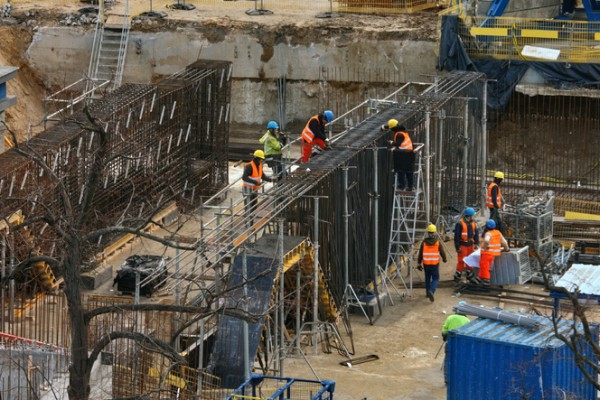How to regulate construction site noise levels for hearing loss prevention
Construction sites are naturally noisy environments. Managing noise protects workers’ hearing, improves safety and reduces disruption to nearby communities. Understanding noise risks, adhering to regulations and implementing simple strategies can make construction safer and more productive for everyone.
Hazardous noise in the construction industry
Loud machinery such as grinders, drills, excavators, compactors, mixers, screw guns and cutters frequently exposes construction workers to high noise levels. These tools are used frequently for drilling, cutting, hammering, structural work and masonry work. Direct and background noise contribute to overall exposure. Those most at risk include operators of impact tools, workers using explosives and workers using pneumatically powered equipment and plant powered by an internal combustion engine. Staff in the vicinity of noisy plants and maintenance workers are also at risk.
Zero decibels is the softest sound that a healthy human ear can detect. From this point, every 3dB increase signifies a doubling of the noise intensity. For instance, noise recorded at 88dB is twice as intense as noise recorded at 85dB. Construction sites typically experience noise levels ranging from 80 to 90dB.
The likelihood of experiencing damage that leads to hearing loss increases with prolonged or repeated exposure to noise. In 2022, SafeWork reported numerous cases of hearing loss among construction workers, primarily caused by exposure to loud noise. Carpenters had the highest rate at 7%, followed closely by painters at 6%. Both concrete workers and electricians reported a 9% rate, while roofers had a rate of 1%.
Over the past four years, more than 10,000 workers in New South Wales have suffered noise-related injuries. More than 90% of these cases led to lifelong hearing disabilities. In 2023, incident rates in the construction and mining sectors increased by 15%. This led to inquiries into the noise exposure levels of workers to create better prevention strategies. Loud noise exposure remains a significant contributor to hearing loss in the construction industry.
Understanding regulations and hearing protection standards
Under Clause 56 of the WHS Regulation 2025, workers must not be exposed to more than 85dB averaged over an eight-hour workday. If you need to raise your voice to speak to someone nearby, the noise level is likely 85dB or higher. Managing noise is a shared duty. Persons Conducting a Business or Undertaking (PCBUs) who own or operate a plant must ensure that the equipment meets the exposure standard.
PCBUs managing sites should set precise noise requirements in contracts. Workers must follow procedures and wear hearing protection correctly to ensure their safety. There are two main types of noise: Occupational noise that affects people working on-site and environmental noise affecting nearby residents and buildings.
Reasonable control protects workers and the community. The majority of workers’ compensation claims have involved carpenters, concrete workers and machine operators who regularly work in environments exceeding the permissible limit of 85dB.
Practical strategies to reduce noise exposure
While it’s challenging to eliminate noise, several practical measures can significantly reduce it and ensure your site remains compliant with local regulations. Checking regional or municipal noise requirements helps avoid violations and maintain good relationships with nearby communities.
Some of the loudest sources include diesel vehicles, backup alarms, milling machines, grinders and crushers. To lower noise levels on-site, design the layout to minimise the need for vehicles to reverse and train operators to switch off equipment when it is not in use. Use noise tents or barriers around jackhammers and similar tools and set up truck cleanout areas away from active work zones. With careful planning, you can manage these sounds effectively and complete projects safely and efficiently.
Choose equipment designed with built-in noise-reduction features and keep tools well-maintained to minimise excess sound. You can also reduce exposure by isolating noise sources with barriers or soundproof covers and by using personal protective equipment, such as earmuffs or earplugs.
Protecting hearing and improving sites
Controlling noise on construction sites benefits workers, contractors and the community. Early planning, practical strategies and ongoing attention ensure hearing is protected, work runs smoothly and nearby residents experience less disturbance. By prioritising hearing protection, the industry builds better structures and creates healthier workplaces.

